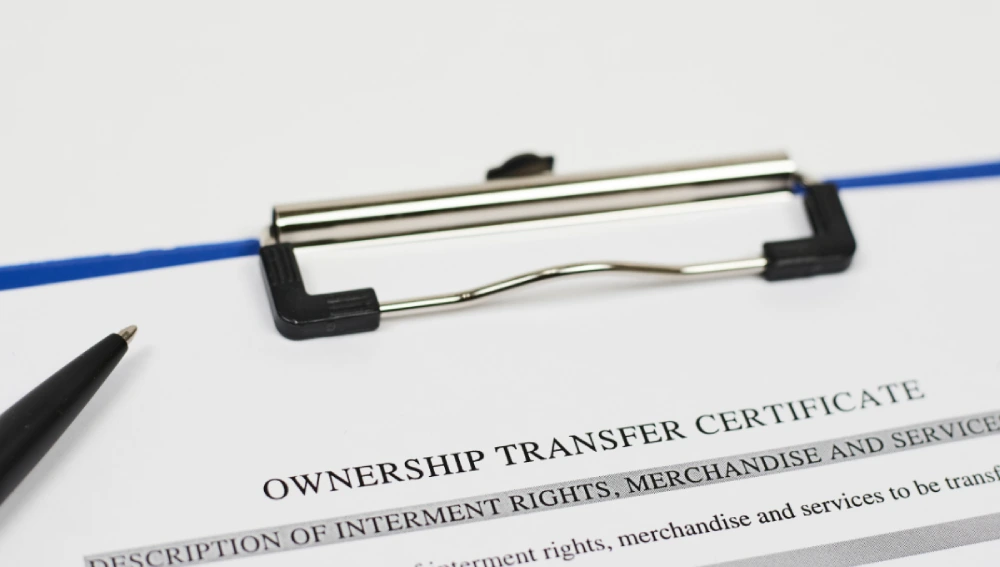Transferring a property without a succession certificate has gained interest among individuals who inherit the property. In other countries, it is mandatory to have a succession certificate along with a bank balance or other details on movable properties.
However, for immovable properties, a succession certificate is not required; however, an alternative document is necessary for a smooth transfer process. This blog helps you register property transfers without a succession certificate.
Understanding the Succession Certificate

A succession certificate is a legal document, as you are aware, that is issued by the court to an heir that verifies their right to inherit the deceased’s estate. The succession certificate includes details about all the debts, securities, and other crucial information, namely bank statements, investments, and other assets that are under the deceased’s name.
In many jurisdictions, you can transfer a property without a succession certificate. Especially if it is an immovable property like a house, unless an authority needs the certificate, you don’t have to produce a succession certificate. Moreover, immovable property transfers are taken care of by other documents, namely a will, a legal heir certificate, or a letter of administration.
Why You Might Not Need a Succession Certificate?
There are certain reasons why you might not need a succession certificate for property transfer:
- Will: If you have a valid will, which is left by the deceased, mentioning the role and the property, then you no longer need a succession certificate.
- Joint Ownership: In case a property is owned and looked after jointly, then the property legally and automatically transfers to the surviving one, which means you need no succession certificate.
- Legal Heir Certificate: Having a legal heir certificate is sufficient to facilitate the transfer of the property.
- Nominee in Records: If the deceased nominated you in housing societies or documented the transfer of property, this can confirm your nomination and bypass the need for a succession certificate.
Steps to Transfer Property Without a Succession Certificate

Since there are alternatives to transferring property without a succession certificate, let’s look into the steps to proceed.
1. Verification of the Existence of a Will
The primary and most fundamental step in transferring a property is verifying the existence of the will. The legally available will should outline the details and beneficiaries of the property.
To locate your will, visit your lawyer or any legal authorities. You can also probate the will in court and enforce the terms of the will.
2. Identify Legal Heirs
In case there is no will, then locate a legal heir, which can be identified through a legal heir certificate or via family tree documentation.
You can get a legal heir certificate by visiting your local revenue or municipal office with a death certificate. You have to submit the related documents to get the certificate. However, the authorities will verify the claim to see if there is any conflict of interest.
3. Collect Required Documents
It is important to gather the necessary documents before a property transfer.
- A death certificate of the deceased is mandatory.
- Collect property documents, including sale deeds, ownership documents, or title deeds for the original property.
- A family tree document or a legal heir certificate that recognises the heir for the property.
- Gather all the address proofs of all the beneficiaries.
4. Settle Outstanding Dues
Before focusing on property transfers, make sure that the outstanding dues, such as utility bills, property tax, and any loan against the property, are paid. This will avoid any future legal disputes. Check with the property tax departments or local municipalities to see if there are any pending dues. Settle any loans or encumbrances on the property.
5. Proceed with the Transfer Deed
Depending on the mutual agreements, you can proceed with the transfer deed using. the collected documents, either with a transfer by will, a gift deed, or a partition deed.
6. Register the Transfer
Once all the documents are secured, you can register the property transfer in the local sub-registrar’s office. This will make the transfer document legally recognised and recorded.
- Prepare the Deed: Make sure that the transfer deed is prepared with all the legal stamps and drafted according to the format.
- Registration Process: In the presence of a witness, submit the legal document to the sub-registrar’s office.
- Pay Fee and Stamp Duty: The local laws will have a designated stamp duty and registration fee. It is important to attach this document to the other required documents.
Challenges of Transferring Property Documents Without Will
- Conflict Among Heirs: In the absence of will, there is always chaos among the heirs. Each heir may expects a share and make claims, leading to litigation. The process of putting off the dispute is often a costly and lengthy one that requires court interventions.
- Incomplete Documentation: The transfer of property can be delayed if essential documents like the death certificate or property ownership papers are missing. The property transfer cannot proceed with incomplete documentation, thus complicating the process.
- Cost Involved: The transfer of property often has associated costs that are used for registrations and more. If legal issues arise, these costs can increase significantly, especially if the court becomes involved. This adds further complexity to the transfer process.
Conclusion
A succession document is not mandatory for property transfers on immovable properties all procedures should be done with the deed of the surrender period. However, other documents, such as a death certificate, will, and legal heir certificate, are essential. It is crucial to be aware of potential disputes among legal heirs, which can complicate the transfer process. Given the variability in laws across jurisdictions, seeking legal counsel is advisable to ensure compliance and mitigate challenges.
FAQs
Yes, there are certain alternatives to succession certificates, specifically the legal heir certificate and death certificate.
A succession certificate is typically mandatory if you want to transfer movable property, as it indicates the rightful heir to the property.
The legal ownership usually passes to immediate family members, such as the spouse, children, or grandchildren, unless a will specifies otherwise.

